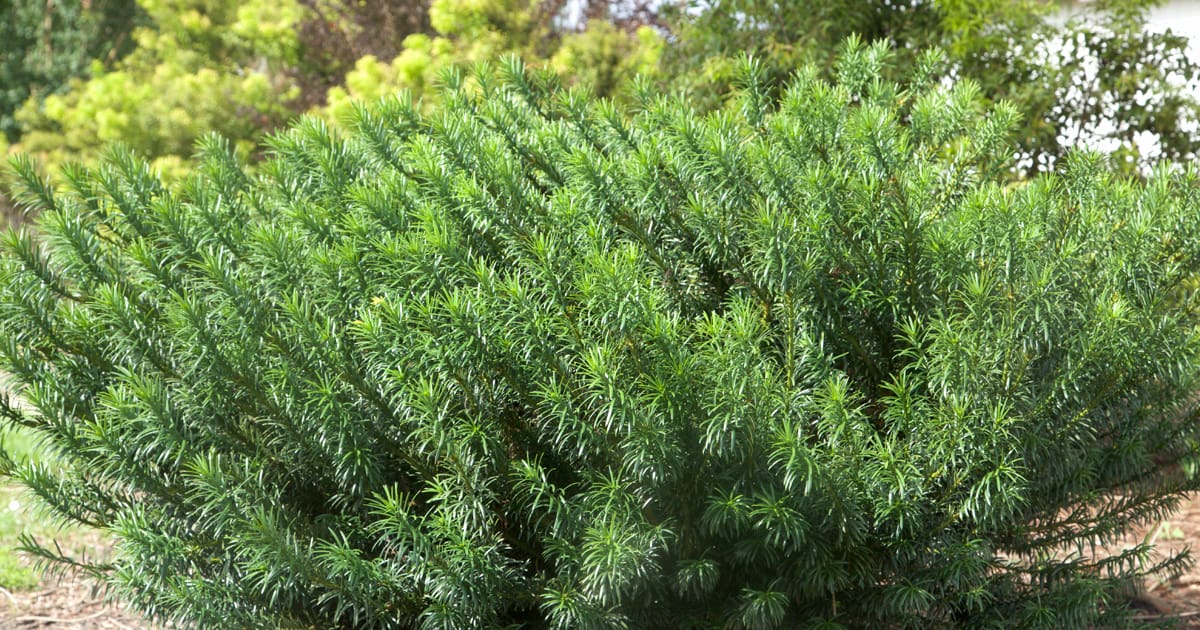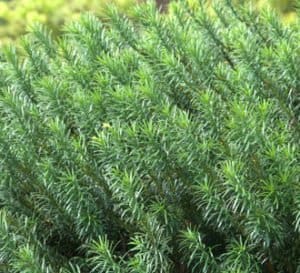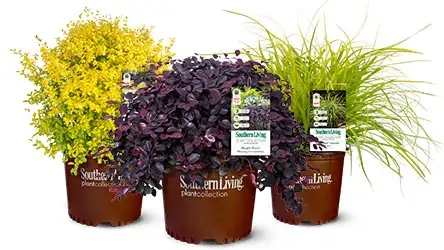Gardeners want plants that will look their best with minimal care. Yewtopia® Plum Yew fits the bill perfectly, with a lovely vase-like form that remains compact with very little pruning. Even better, this slow growing beauty only requires occasional pruning to maintain even growth. Here’s how to properly prune your Plum Yew.
Perfect Your Timing
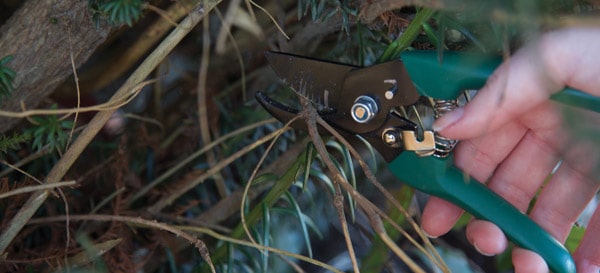
The best time to shape Yewtopia® Plum Yew is late winter or early spring – before the first flush of new growth for the season. Of course, damaged or dead branches may be removed any time of year.
Gather Your Tools
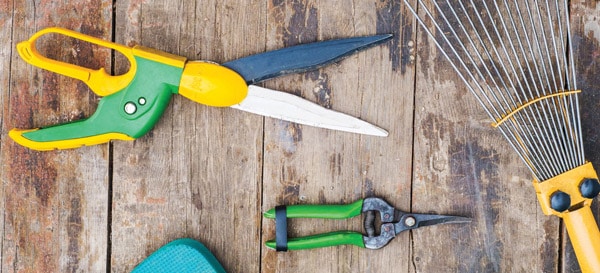
Always start with sharp tools to make clean cuts and use the correct tool for the job at hand – anvil loppers or pruners for removing dead wood, and bypass loppers or pruners for living tissue.
Exercise Patience
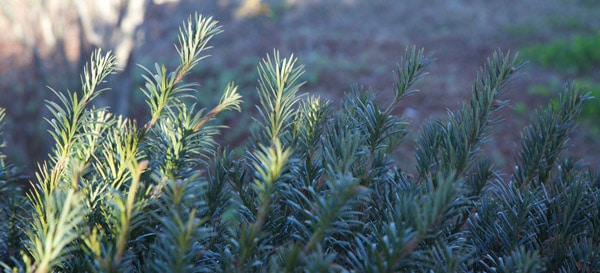
With very young plants, it is best not to be too hasty in cutting back long branches. New growth is often uneven in the first few seasons, but may right itself over time. Remember, plum yews are slow growing and patience will pay off.
Prune Sparingly
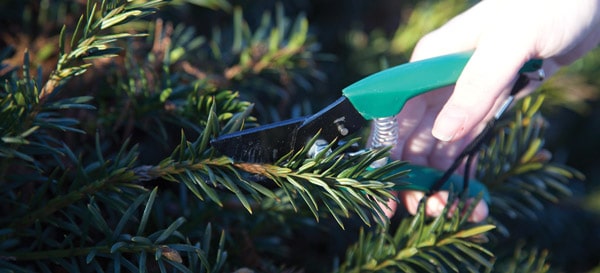
Heading cuts –which remove the tip or growing point of a branch – may be used sparingly with Yewtopia® Plum Yew to tame overly long branches growing beyond the main body of the shrub.
Cut back the elongated branches, making some cuts deeper than others to ensure a natural looking plant. Remember, heading cuts will stimulate growth below the cut and are often used to make a plant grow more densely.
It may be necessary to revisit the plant in early summer to thin and control some of the new growth.
Ideal pruning method
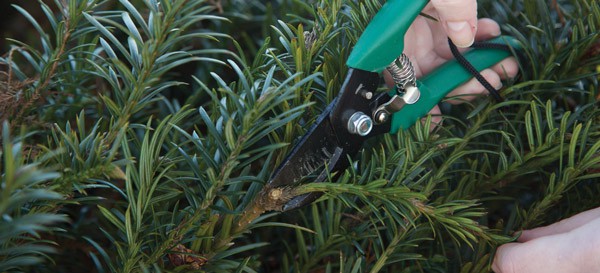
Use thinning, rather than heading cuts, to shape Yewtopia® whenever possible. This type of cut is used to remove a branch at its point of origin, where it intersects with another branch.
When making thinning cuts, work from the underside of the branch and cut the shoot at an angle just beyond the branch intersection. Don’t worry if cut marks are visible, these will soon be covered by the season’s new growth.
Thinning cuts will not stimulate a great deal of new growth below the cut. As such, thinning is generally the best pruning method to enhance the plant’s natural appearance.
Remember, it’s best to work slowly when pruning. Stand back after each cut to observe how the shrub’s form has changed.

